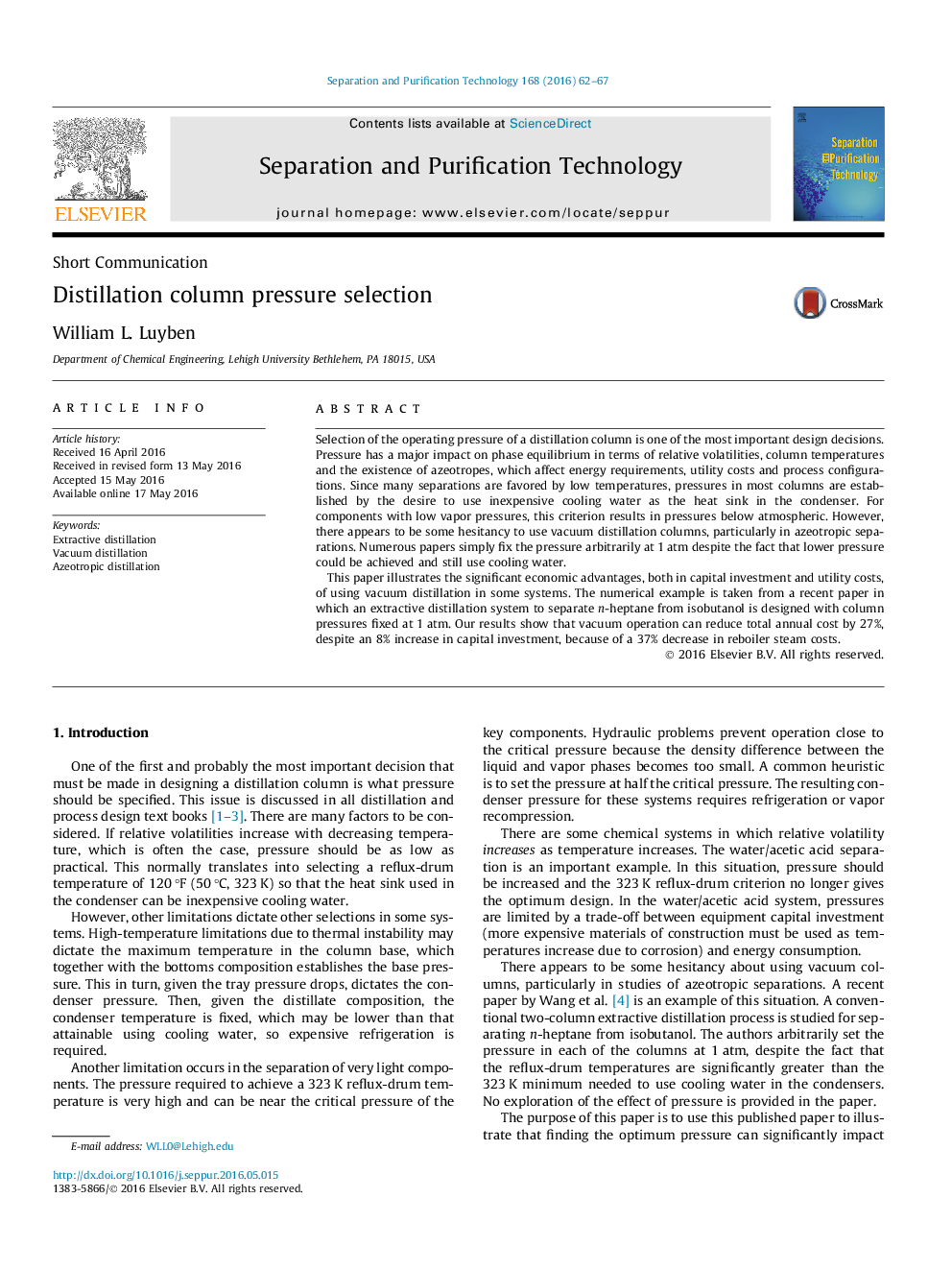| Article ID | Journal | Published Year | Pages | File Type |
|---|---|---|---|---|
| 640042 | Separation and Purification Technology | 2016 | 6 Pages |
•Arbitrarily fixing distillation column pressure at 1 atm does not give the optimum design in many systems, particularly in azeotropic separations.•Optimum pressures in the extractive and solvent recovery column are often different.•Quantitative determination of the optimum column pressure requires consideration of both energy costs and capital investment.
Selection of the operating pressure of a distillation column is one of the most important design decisions. Pressure has a major impact on phase equilibrium in terms of relative volatilities, column temperatures and the existence of azeotropes, which affect energy requirements, utility costs and process configurations. Since many separations are favored by low temperatures, pressures in most columns are established by the desire to use inexpensive cooling water as the heat sink in the condenser. For components with low vapor pressures, this criterion results in pressures below atmospheric. However, there appears to be some hesitancy to use vacuum distillation columns, particularly in azeotropic separations. Numerous papers simply fix the pressure arbitrarily at 1 atm despite the fact that lower pressure could be achieved and still use cooling water.This paper illustrates the significant economic advantages, both in capital investment and utility costs, of using vacuum distillation in some systems. The numerical example is taken from a recent paper in which an extractive distillation system to separate n-heptane from isobutanol is designed with column pressures fixed at 1 atm. Our results show that vacuum operation can reduce total annual cost by 27%, despite an 8% increase in capital investment, because of a 37% decrease in reboiler steam costs.
